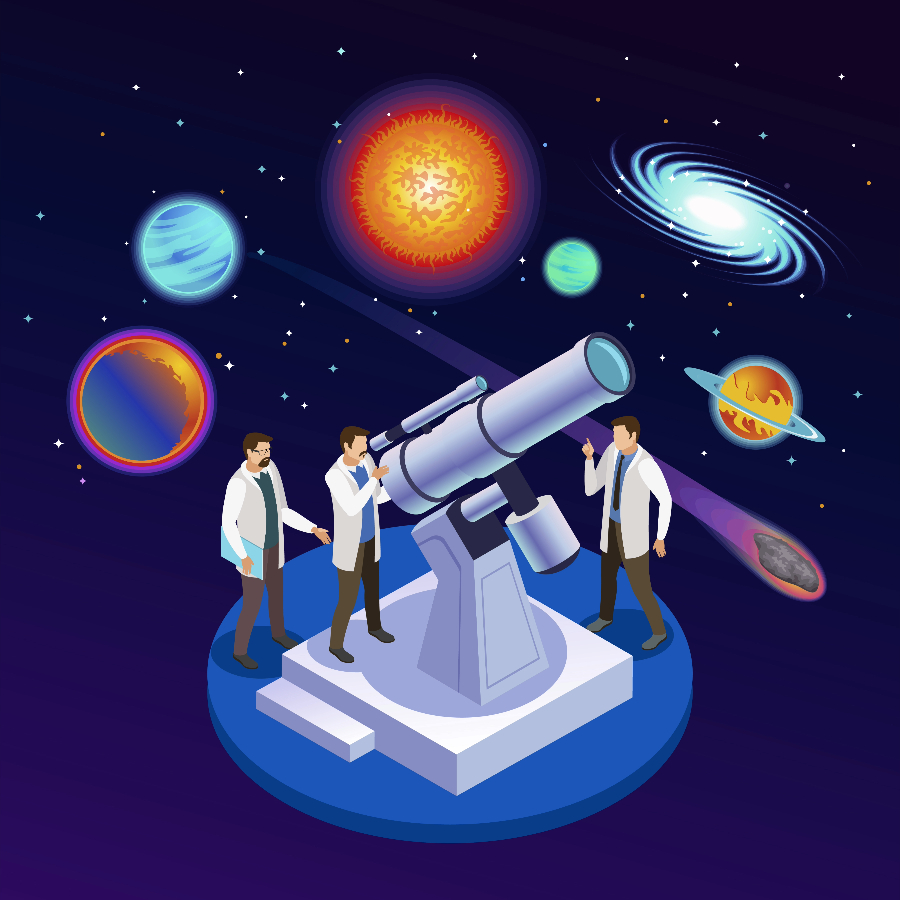Solar Exploration through Aditya L1 Mission (Unveiling the Dynamics of the Sun and Space Weather)
Aditya L1 will mark India’s pioneering space mission focused on solar study. Positioned within a halo orbit encircling the Lagrange point 1 (L1) within the Sun-Earth system, approximately 1.5 million km from Earth, this spacecraft will enjoy the unique benefit of uninterrupted solar observation, devoid of any occultation or eclipses. This continuous observation will significantly enhance the understanding of solar activities and their impact on real-time space weather.
Equipped with seven distinct payloads, the spacecraft aims to scrutinize the photosphere, chromosphere, and the Sun’s outermost layers, known as the corona. It will employ a range of electromagnetic, particle, and magnetic field detectors. Four of these payloads will offer direct views of the Sun from the advantageous L1 vantage point, while the remaining three payloads will conduct in-situ analyses of particles and fields at Lagrange point L1. This comprehensive approach promises invaluable insights into the propagation effects of solar dynamics throughout the interplanetary medium.
The suite of Aditya L1 payloads is anticipated to furnish vital information crucial for comprehending various phenomena, including coronal heating, coronal mass ejections, pre-flare and flare activities, as well as the characteristics of these events. Additionally, the mission will delve into the dynamics of space weather and the propagation of particles and fields.
Science Objectives:
Aditya-L1’s primary scientific goals are:
- Investigation of dynamics within the upper solar atmosphere, encompassing the chromosphere and corona.
- Exploration into processes such as chromospheric and coronal heating, the physics of partially ionized plasma, initiation of coronal mass ejections, and solar flares.
- In-situ observation of particle and plasma environments to amass data informing the dynamics of solar particle emissions.
- Unraveling the physics governing the solar corona and its heating mechanisms.
- Diagnostics of plasma within the coronal region, including temperature, velocity, and density of the coronal loops.
- Elucidation of the development, dynamics, and origins of Coronal Mass Ejections (CMEs).
- Identification of the sequential processes spanning multiple layers (chromosphere, corona’s base, and extended corona) that culminate in solar eruptive events.
- Mapping the topology of the magnetic field and obtaining magnetic field measurements within the solar corona.
- Understanding the driving forces behind space weather, encompassing the origin, composition, and dynamics of the solar wind.
Aditya-L1 Payloads
The focal point of the Aditya-L1 instruments lies in scrutinizing the solar atmosphere, primarily targeting the chromosphere and corona. Concurrently, in-situ instruments will closely monitor the immediate surroundings at the L1 point. The spacecraft accommodates a total of seven payloads, with four dedicated to remote sensing of the Sun and the remaining three focused on in-situ observations.
Below are the payloads outlined alongside their principal capabilities for scientific exploration
Remote Sensing Payloads
- Visible Emission Line Coronagraph (VELC) – Corona/Imaging & Spectroscopy
- Solar Ultraviolet Imaging Telescope (SUIT) – Photosphere and Chromosphere Imaging- Narrow & Broadband
- Solar Low Energy X-ray Spectrometer (SoLEXS) – Soft X-ray spectrometer: Sun-as-a-star observation
- High Energy L1 Orbiting X-ray Spectrometer (HEL1OS) – Hard X-ray spectrometer: Sun-as-a-star observation
In-situ Payloads
- Aditya Solar wind Particle Experiment (ASPEX) – Solar wind/Particle Analyzer Protons and heavier Ions with directions
- Plasma Analyser Package For Aditya (PAPA) – Solar wind/Particle Analyzer Electrons and heavier Ions with directions
- Advanced Tri-axial High-Resolution Digital Magnetometers – In-situ magnetic field (Bx, By and Bz).
Details about the launch
India’s space agency, ISRO, is all set to launch its first solar mission, Aditya-L1, on September 2 at 11:50 am from the Sriharikota Space Centre 1. The spacecraft will be launched using the Polar Satellite Launch Vehicle (PSLV-C57) rocket 2. Aditya-L1 will be India’s first space-based observatory to study the Sun 1. It will observe the solar corona from a remote location at the Sun-Earth Lagrange point L1, which is about 1.5 million kilometers from Earth 1. Lagrange Points are points in space where the gravitational forces of two large bodies, such as the Sun and the Earth, balance out, creating a region of equilibrium that can be used by a spacecraft to reduce fuel consumption 1. Aditya-L1 is named after Joseph-Louis Lagrange, a French mathematician who first studied Lagrange Points in the 18th century 1.
The major science objectives of the Aditya-L1 mission are to study solar upper atmospheric (chromosphere and corona) dynamics, chromospheric and coronal heating, physics of the partially ionized plasma, initiation of the coronal mass ejections and flares 3. The spacecraft will take around 109 Earth days after launch to reach the halo orbit around the L1 point 3.
This mission is a significant milestone for India’s space exploration program. After successfully landing a spacecraft near the south pole of the Moon, India’s next cosmic quest is to study the Sun 1. Aditya-L1 will provide valuable insights into our star and help us understand its behavior better.
Source
- https://www.isro.gov.in/Aditya_L1.html
- https://www.ndtv.com/india-news/indias-sun-mission-aditya-l1-dates-announced-what-are-its-objectives-4338004
- https://www.indiatoday.in/science/story/isro-launches-aditya-l1-mission-to-study-sun-15-lakh-km-long-journey-begins-2429727-2023-09-02

